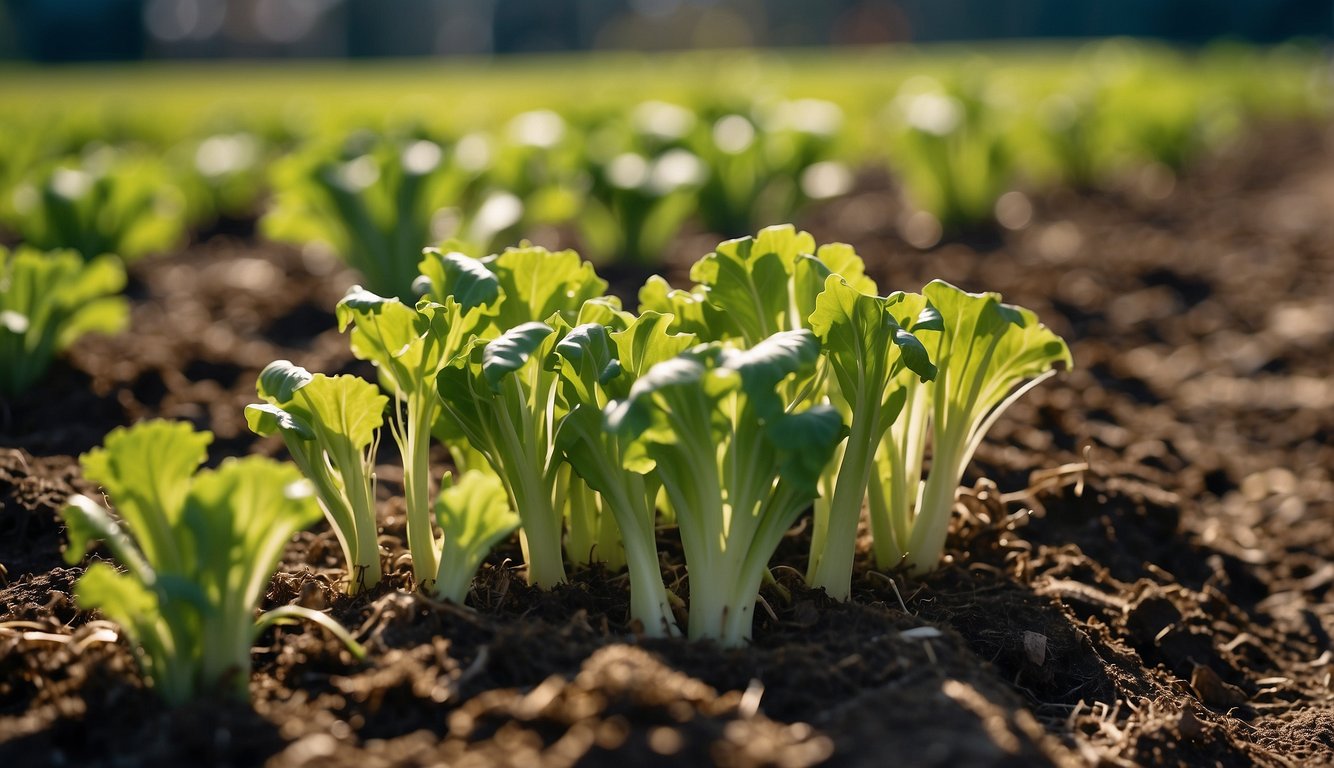TheHerbProf.com is a treasure trove of knowledge for those interested in natural healing and herbal remedies. The website is run by Paul Johnston MD. A naturopathic who has not only received extensive education in the field but also has personal experience in self-healing.
I’ve always been a fan of reducing food waste, and I’m sure many of you are, too. Did you know that you can actually regrow some of your favorite fruits and vegetables from kitchen scraps? It’s a great way to save money on groceries and reduce the amount of food waste that ends up in landfills. But which food you can grow from scraps? Well, let me show you!
Regrowing food from scraps is easier than you might think. All you need is a little bit of patience, some sunlight, and a container filled with water or soil. Not only is it a sustainable way to grow your own food, but it’s also a fun and educational activity to do with kids. Plus, it’s a great way to get more use out of your kitchen scraps before composting them.
Some of the most common vegetables that can be regrown from scraps include lettuce, celery, onions, and garlic. Fruits like pineapple and avocado can also be regrown from their scraps. In this article, I’ll be sharing some of my favorite tips and tricks for regrowing food from scraps, as well as some of the benefits of doing so. So, let’s get started!
Understanding Plant Regeneration
Science of Regrowth From Food You Can Grow from Scraps
As someone who is interested in reducing food waste, I have been learning about the science of regrowing food from scraps. It turns out that many plants have the ability to regenerate from various parts of their bodies, including roots, stems, leaves, and even eyes. This process is called vegetative propagation and it involves the growth of new plants from existing plant parts.
The exact process of regrowth varies depending on the plant and the part being used. For example, some plants can grow from seeds, while others can only regrow from cuttings or scraps. Additionally, some plants require specific conditions, such as water or soil, to regrow successfully.
One interesting aspect of plant regeneration is cellular regeneration. When a plant is damaged, its cells can divide and differentiate into new cells, allowing the plant to heal and regrow. This process is similar to the way our own bodies heal from injuries.
Benefits of Regrowing Food You Can Grow from Scraps
Regrowing food from scraps has a number of benefits. First and foremost, it helps to reduce food waste. By using parts of vegetables and fruits that would otherwise be thrown away, we can make the most of our food resources.
Regrowing food also has environmental benefits. By reducing food waste, we can reduce the amount of organic matter that ends up in landfills. This organic matter can produce methane, a potent greenhouse gas that contributes to climate change. Additionally, regrowing food can help to reduce the amount of energy and resources needed to produce new plants.
Finally, regrowing food can be a fun and educational activity. It can be a great way to teach children about plant life cycles and the importance of reducing waste. It can also be a way to connect with nature and learn more about organic gardening.
Getting Started with Scraps
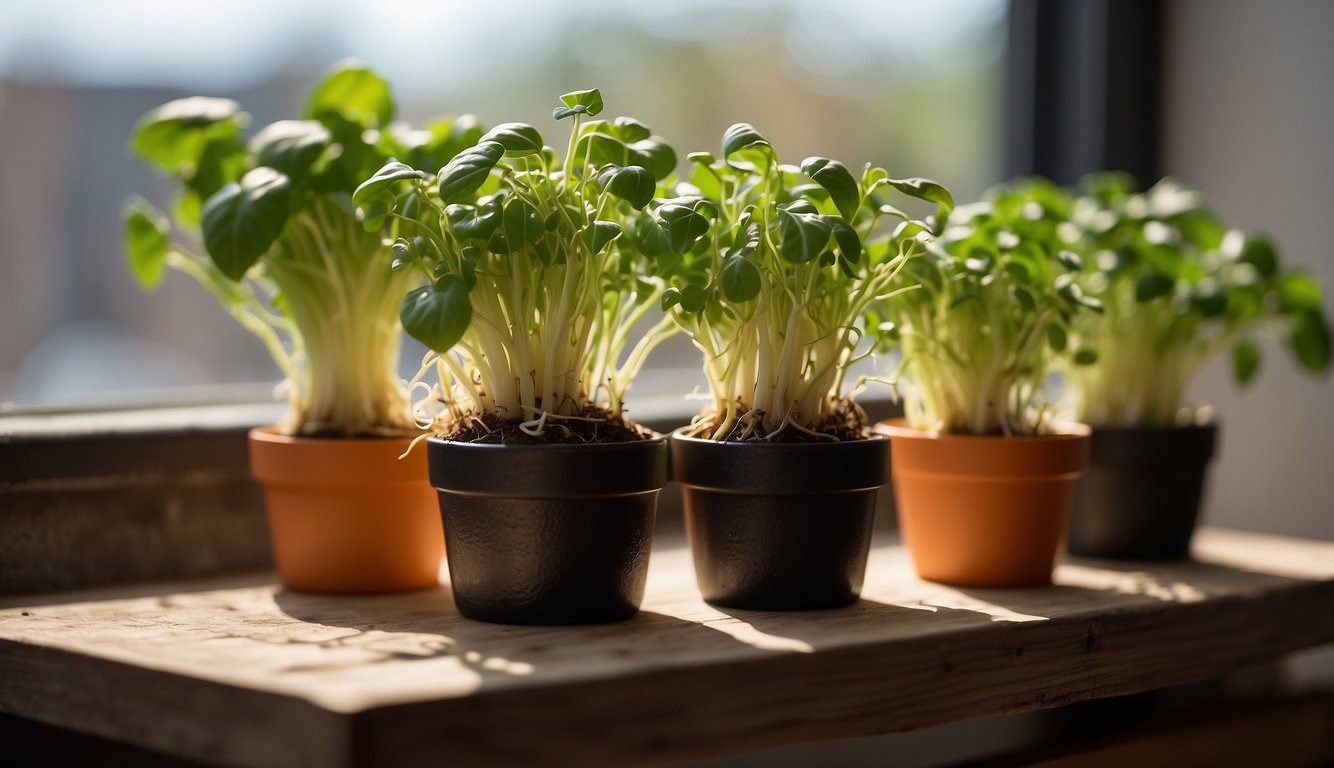
Selecting Suitable Scraps
Growing food from scraps is an easy and rewarding way to reduce food waste and save money. To get started, select suitable scraps from vegetables and herbs that you have used in your cooking. Look for scraps that still have some stem or root attached. Some of the best scraps to use include lettuce, celery, onions, garlic, leeks, shallots, potatoes, sweet potatoes, carrots, turnips, parsnips, beets, and herbs like basil and cilantro.
Preparing Scraps for Regrowth
Before planting your scraps, it is important to prepare them for regrowth. Start by removing any remaining edible parts and setting them aside for consumption. Then, cut the stem or root of the scrap to about two inches in length. If the scrap has leaves, remove the lower leaves to prevent them from rotting in the soil.
Creating the Right Environment For Food You Can Grow from Scraps
To ensure successful regrowth, scraps need the right environment. Start by filling a container with warm water and placing your scraps in the water. Let them soak for a few hours to encourage root growth. Then, fill a pot with potting soil and make a hole in the center. Place the scrap in the hole and cover it with soil. Water the soil until it is moist but not waterlogged.
Place the pot in a sunny window or under a grow light. Ensure that the scrap receives plenty of sunlight and warmth. The amount of sunlight and warmth required will depend on the climate and humidity of your area. Keep the soil moist by watering it regularly, but be careful not to overwater as this can cause root rot.
By following these simple steps, you can grow a variety of vegetables and herbs from scraps with minimal effort. Not only is it a fun and rewarding way to grow your own food, but it is also an eco-friendly way to reduce food waste and save money.
Regrowing Vegetables From Food You Can Grow from Scraps
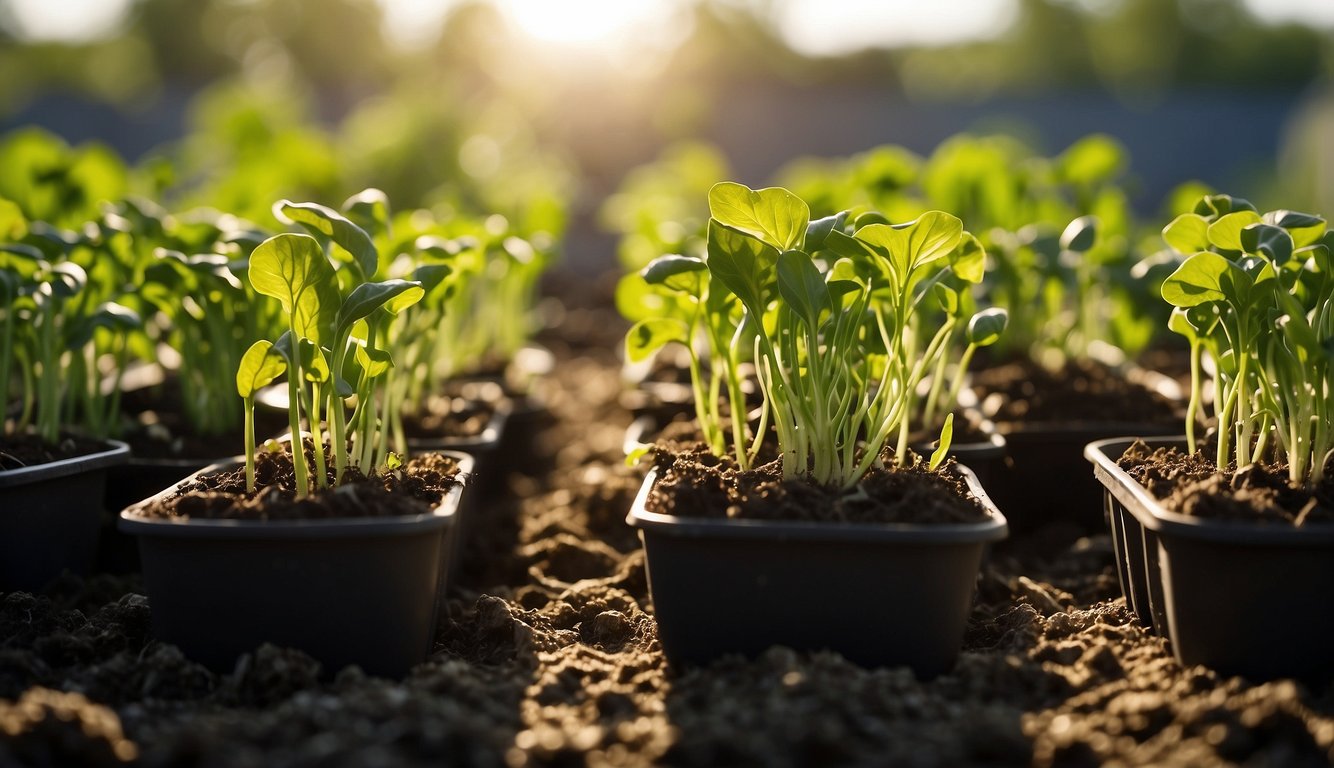
Regrowing vegetables from kitchen scraps is a simple and satisfying way to reduce food waste and save money on groceries. Here are some tips on how to regrow some of the most common vegetables.
Leafy Greens Regrowth
Leafy greens like lettuce, cabbage, and bok choy can be regrown from their bases. Simply cut off the bottom inch or two of the base and place it in a bowl or jar of water. Place the container in a sunny spot and change the water every few days. In a week or two, you should see new growth emerging from the center of the base. Once the new leaves are a few inches tall, you can transplant them into soil.
Root Vegetables Regrowth
Root vegetables like carrots, turnips, beets, and radishes can be regrown from their tops. Cut off the top inch or two of the root and place it in a shallow dish of water. Change the water every few days and place the dish in a sunny spot. In a week or two, you should see new growth emerging from the top of the root. Once the new leaves are a few inches tall, you can transplant them into soil.
Alliums Regrowth
Alliums like onions, garlic, leeks, shallots, and green onions can be regrown from their bulbs or bases. Cut off the bottom inch or two of the bulb or base and place it in a shallow dish of water. Change the water every few days and place the dish in a sunny spot. In a week or two, you should see new growth emerging from the top of the bulb or base. Once the new leaves are a few inches tall, you can transplant them into soil.
Regrowing vegetables from scraps is a fun and easy way to grow your own food and reduce waste. With a little patience and care, you can enjoy a bountiful harvest of fresh produce without spending a dime.
Regrowing Fruits From Food You Can Grow from Scraps
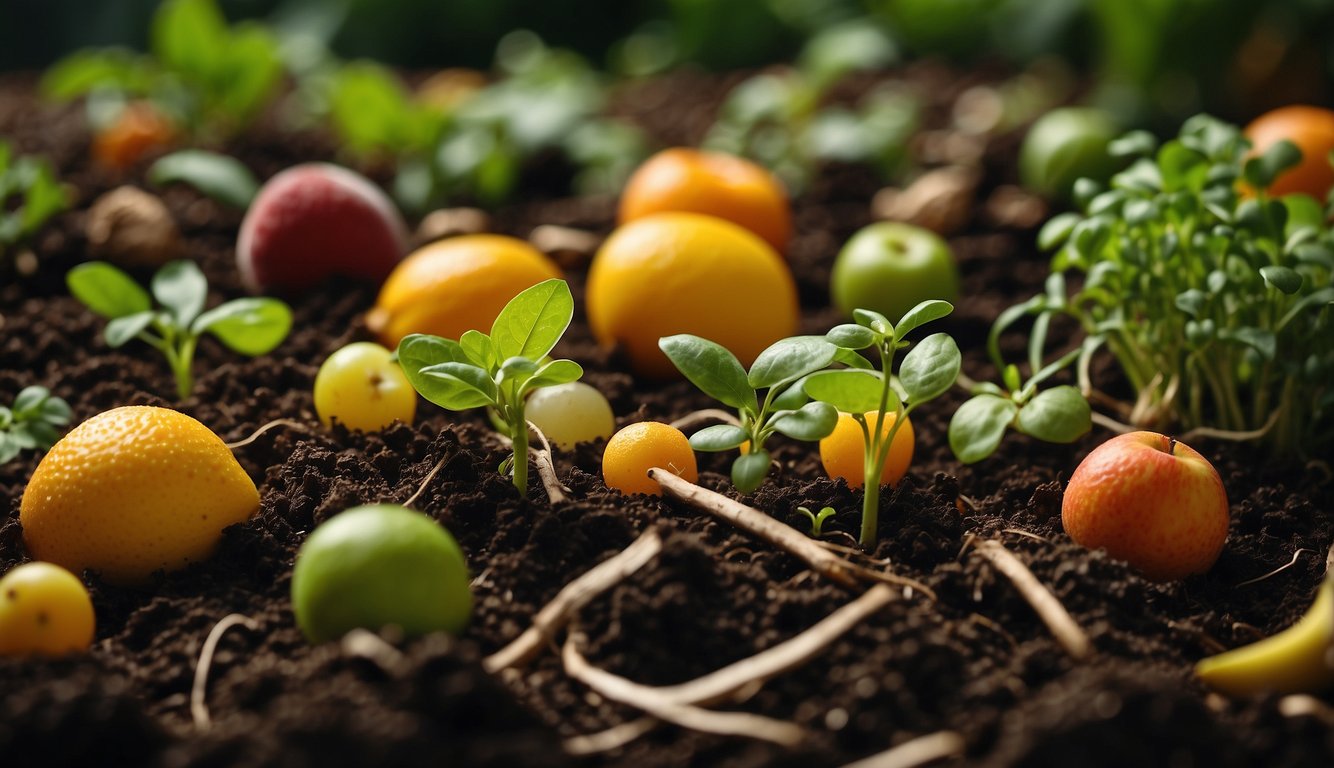
As someone who loves gardening and hates wasting food, I find regrowing fruits from scraps to be incredibly satisfying. Not only is it a great way to reduce food waste, but it can also save you money on groceries. Here are some tips for regrowing different types of fruits.
Tropical Fruits Regrowth
Tropical fruits such as pineapple and avocado can be regrown from their scraps. To regrow a pineapple, cut off the top of the fruit and remove the lower leaves. Let the top dry for a few days, then plant it in a pot with well-draining soil. Pineapple plants need a lot of sunlight and water, so make sure to keep the soil moist and place the pot in a sunny spot.
To regrow an avocado, remove the pit from the fruit and wash off any flesh. Stick three toothpicks into the pit and suspend it in a glass of water with the pointed end facing up. Make sure the water covers about an inch of the bottom of the pit. Within a few weeks, the pit should sprout roots and a stem. Once the stem is about six inches tall, plant the pit in a pot with well-draining soil.
Citrus Fruits Regrowth
Citrus fruits such as lemon can be regrown from their seeds. To regrow a lemon, remove the seeds from the fruit and wash them off. Plant the seeds in a pot with well-draining soil and keep the soil moist. Lemon trees need a lot of sunlight, so make sure to place the pot in a sunny spot.
Stone Fruits Regrowth
Stone fruits such as apples, pears, cherries, and peaches can be regrown from their seeds. To regrow a stone fruit, remove the seeds from the fruit and wash them off. Dry the seeds for a few days, then plant them in a pot with well-draining soil. Keep the soil moist and place the pot in a sunny spot.
Regrowing fruits from scraps is a fun and rewarding way to reduce food waste and save money on groceries. With a little patience and care, you can enjoy fresh, homegrown fruits in no time.
Regrowing Herbs and Spices
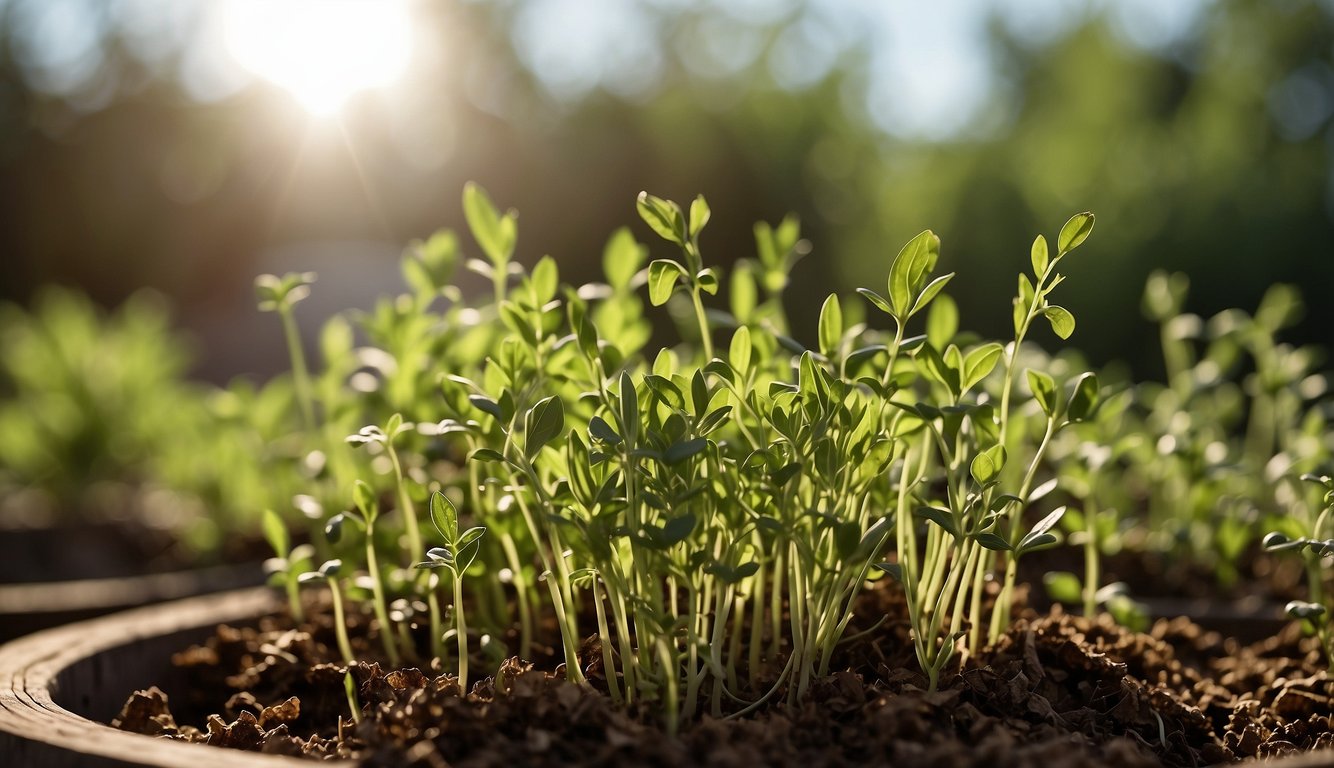
When it comes to regrowing herbs and spices from kitchen scraps, the process is quite simple and can save you money in the long run. Here are some herbs and spices that you can regrow from scraps.
Leafy Herbs Regrowth
Leafy herbs like basil, cilantro, and mint are some of the easiest herbs to regrow from scraps. All you need to do is take a cutting from the herb and place it in a glass of water. Make sure that the stem is submerged in the water but the leaves are not. Place the glass in a sunny spot and change the water every few days. In about a week, you should start to see roots forming. Once the roots are about an inch long, you can transplant the cutting into a pot with soil.
Root Spices Regrowth
Root spices like lemongrass, ginger, and turmeric can also be regrown from scraps. To regrow lemongrass, place the root end in a glass of water and change the water every few days. In about a week, you should start to see roots forming. Once the roots are about an inch long, you can transplant the lemongrass into a pot with soil.
To regrow ginger and turmeric, simply plant a piece of the root in a pot with soil. Make sure that the piece of root has at least one “eye” or bud. Keep the soil moist and in a warm spot, and in a few weeks, you should start to see new growth.
Regrowing herbs and spices from kitchen scraps is a great way to save money and reduce waste. Plus, it’s a fun and easy way to grow your own herbs and spices at home.
Advanced Regrowth Techniques For Food You Can Grow from Scraps
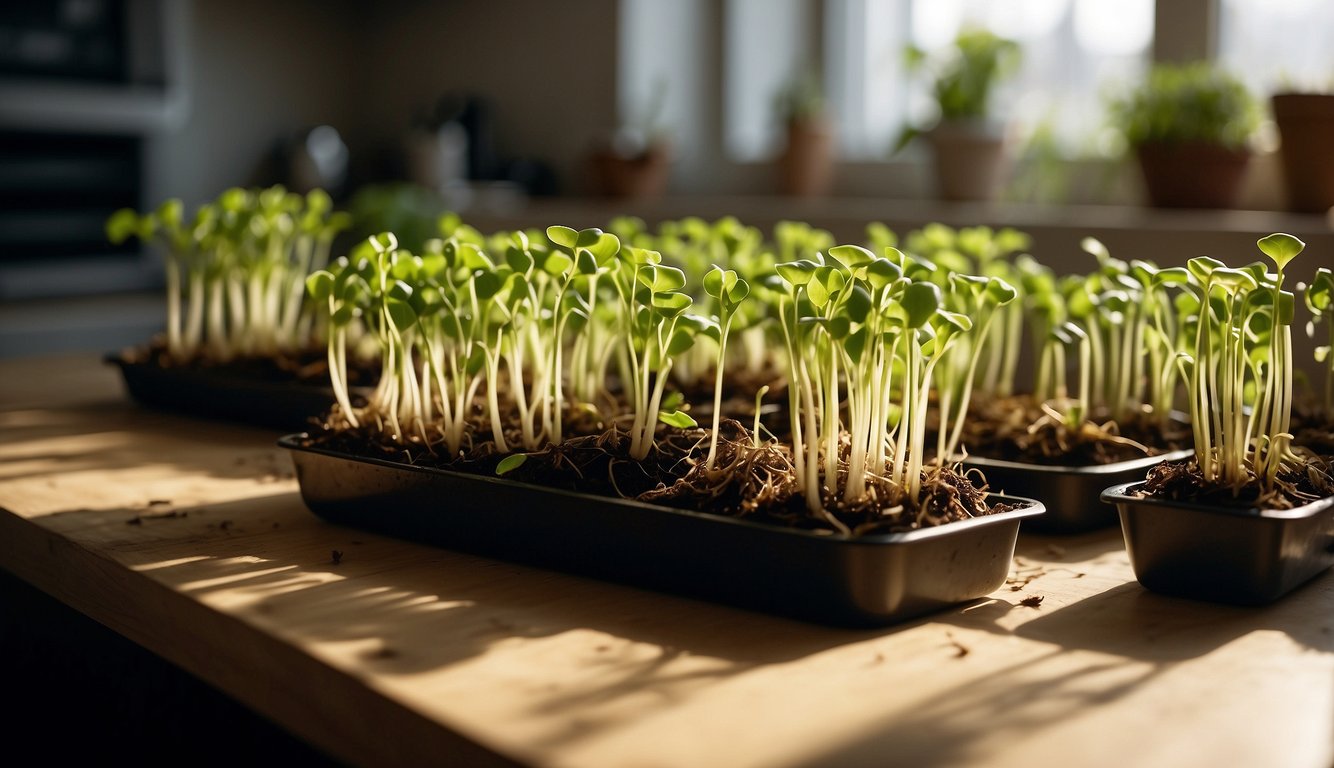
Using Hydroponics for Regrowth
Hydroponics is a soilless method of growing plants that uses nutrient solutions in water instead of soil. It is an excellent way to regrow plants from scraps because it provides a controlled environment for the plants to grow in. I have found that hydroponics is particularly effective for regrowing plants that require a lot of water, such as celery and lettuce.
To get started with hydroponics, you will need a few basic supplies, including a container, a nutrient solution, and a growing medium. You can use a variety of containers, such as plastic tubs or buckets, as long as they are watertight. You can purchase nutrient solutions online or at a hydroponic store, and you can use a variety of growing mediums, such as perlite or coconut coir.
Once you have your supplies, you can start by placing your scraps in the container and covering them with the nutrient solution. Make sure that the scraps are not fully submerged in the solution, as this can cause them to rot. Place the container in a location with indirect sunlight or on a sunny windowsill, and change the nutrient solution every few days.
Soilless Mediums and Nutrients
In addition to hydroponics, there are other soilless mediums that you can use to regrow plants from scraps, such as water and vermiculite. When using these mediums, it is important to provide the plants with the right nutrients to ensure that they grow properly.
For example, if you are using a jar of water to regrow plants, you can add a small amount of liquid fertilizer to the water to provide the plants with the nutrients they need. Similarly, if you are using vermiculite, you can mix in some organic fertilizer to ensure that the plants have access to the nutrients they need.
Overall, using soilless mediums and nutrient solutions can be an effective way to regrow plants from scraps. By providing the plants with the right environment and nutrients, you can ensure that they grow healthy and strong.
Troubleshooting Common Issues On Food You Can Grow from Scraps
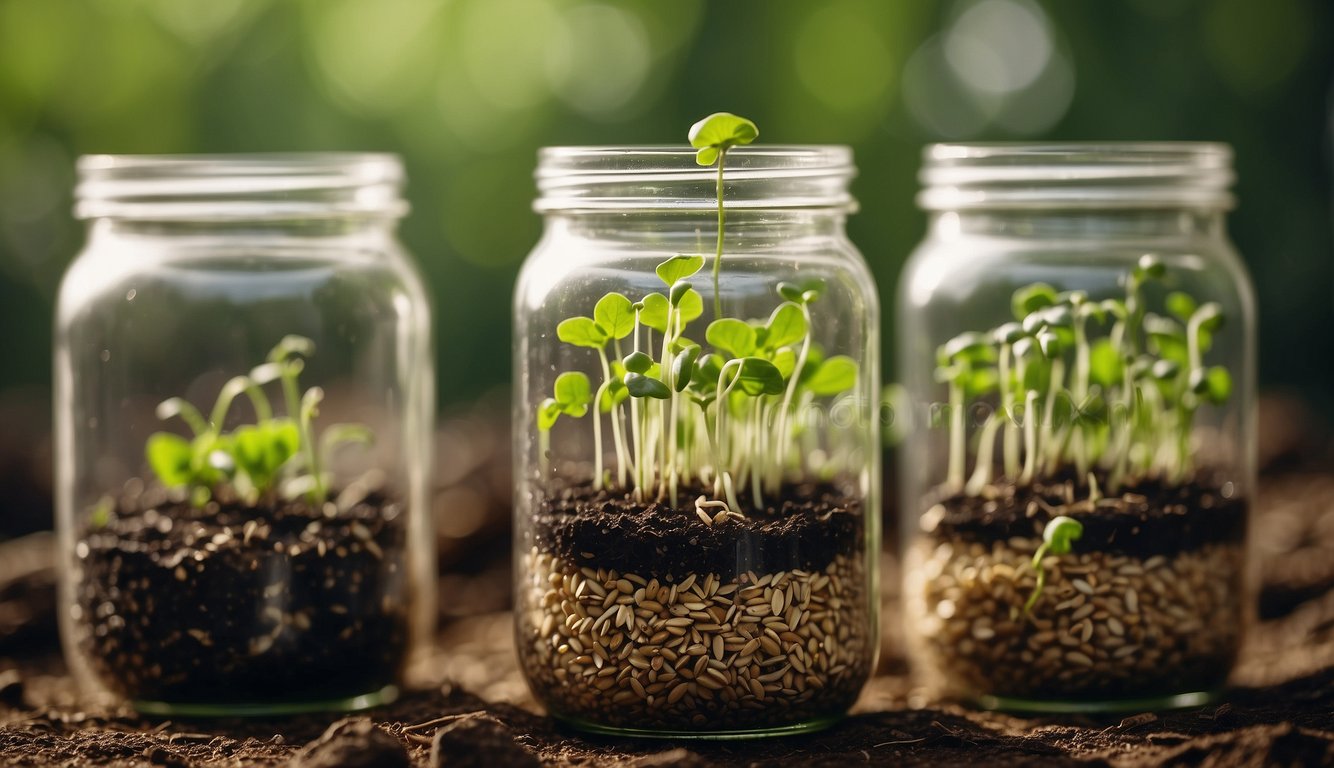
As with any gardening endeavor, growing food from scraps can come with its fair share of challenges. Here are some common issues you may encounter and how to troubleshoot them.
Pest Management
Pests can quickly become a problem when growing food from scraps, especially when you’re growing indoors. Common pests include aphids, spider mites, and whiteflies. To prevent pests, keep your plants healthy, and make sure they’re getting enough light and water. You can also try using natural pest control methods such as neem oil or insecticidal soap. If pests do become a problem, try removing them by hand or using a natural pesticide.
Disease Prevention
Disease can also be a problem when growing food from scraps. To prevent disease, make sure your plants are getting enough light and water, and keep them away from other plants that may be infected. You can also try using a natural fungicide such as copper sulfate or baking soda. If you notice any signs of disease, such as wilting or yellowing leaves, remove the affected parts of the plant and dispose of them properly.
Regrowth Failures
Sometimes, despite your best efforts, regrowing food from scraps may not be successful. This can happen for a variety of reasons, including rot, mold, or simply not enough nutrients. To prevent regrowth failures, make sure you’re using healthy scraps, and that they have enough nutrients to grow. You can also try using a rooting hormone to encourage growth. If regrowth fails, don’t get discouraged. Try again with fresh scraps, and make sure to adjust your growing conditions as needed.
Remember, growing food from scraps is a fun and rewarding way to reduce waste and save money on groceries. By following these tips and troubleshooting common issues, you can enjoy a bountiful harvest of fresh, homegrown produce.
Maximizing Yield and Sustainability On Food You Can Grow from Scraps
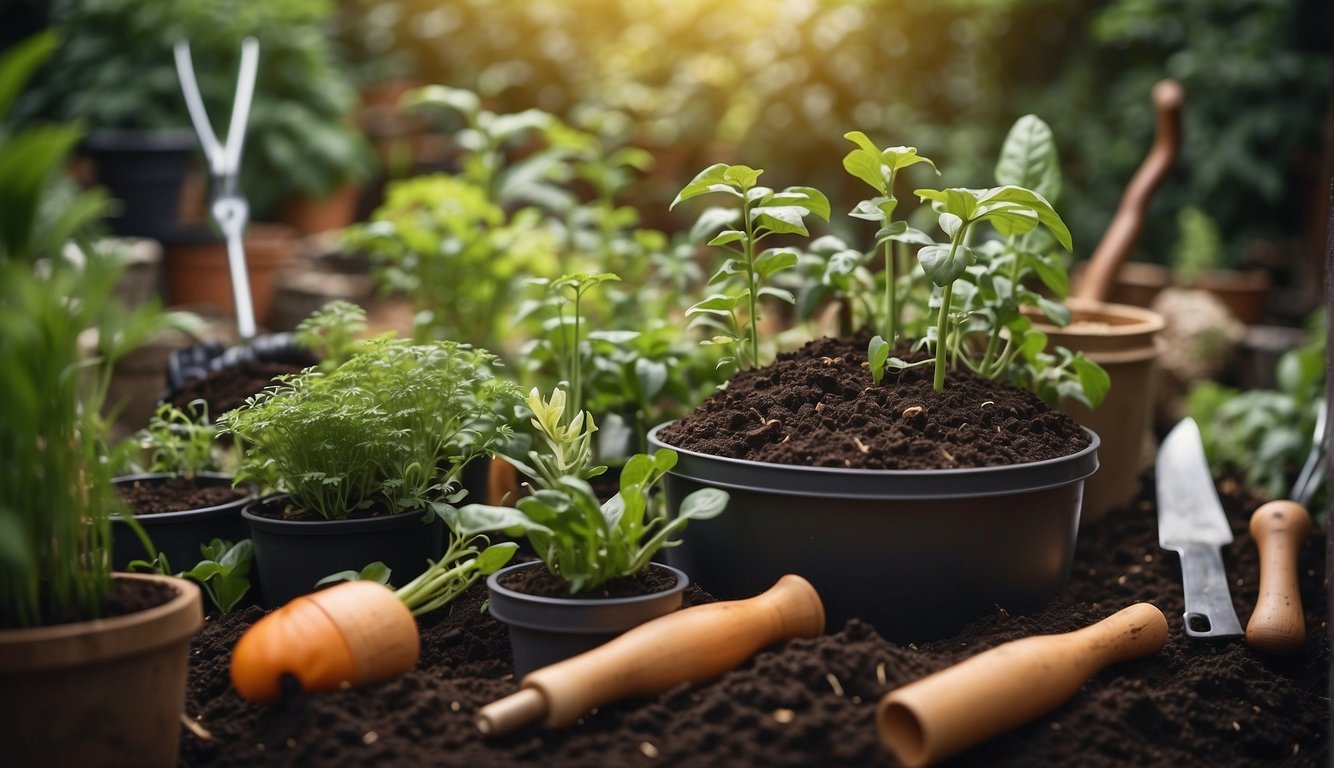
As someone who is passionate about reducing food waste and promoting sustainability, I have found that growing food from scraps is a great way to maximize yield and reduce waste. In this section, I will discuss some techniques for maximizing yield and promoting sustainability when growing food from scraps.
Harvesting Techniques
When harvesting food from scraps, it is important to use the right techniques to ensure that you get the most out of your plants. For example, when harvesting cuttings from herbs like basil or mint, it is important to cut just above a leaf node to encourage new growth. Similarly, when harvesting potatoes or sweet potatoes, it is important to wait until the leaves have died back before harvesting to ensure that the tubers have reached their full size.
Continuous Regrowth Strategies
One of the great things about growing food from scraps is that many plants can be regrown again and again, allowing you to get multiple harvests from a single plant. For example, mushrooms can be grown from scraps of the stem or cap, and can be harvested multiple times over the course of a few weeks. Similarly, pumpkins and winter squash can be regrown from the seeds and can produce multiple fruits over the course of a season.
Composting and Soil Health
Growing food from scraps is not only a great way to reduce waste and maximize yield, but it can also help promote soil health. When you compost your food scraps, you are creating a nutrient-rich soil amendment that can be used to fertilize your plants. Additionally, when you grow food from scraps, you are helping to promote biodiversity in your soil, which can help improve soil health and reduce the need for synthetic fertilizers.
By using these techniques and promoting sustainability in your gardening practices, you can help reduce waste and maximize yield when growing food from scraps. Whether you are growing indoors or outdoors, in direct sunlight or in the shade, there are many different types of food scraps that can be regrown and harvested for delicious, nutritious food.
Food You Can Grow from Scraps – Innovative Ideas and Inspirations
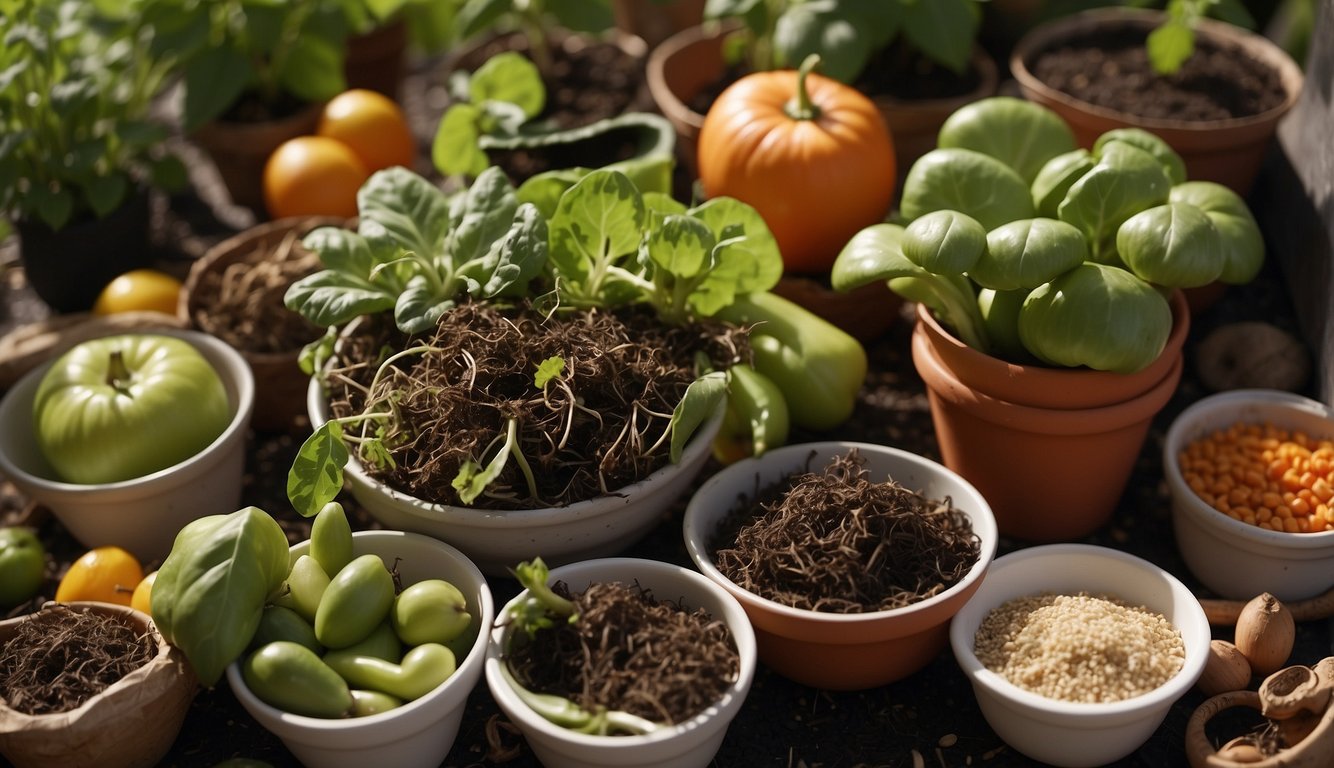
When it comes to growing food from scraps, the possibilities are endless. Here are some innovative ideas and inspirations to get you started.
Creative Container Gardening
Container gardening is a great way to grow your own food, even if you don’t have access to a traditional garden. You can use almost anything as a container, from old buckets to broken teapots. Get creative and have fun with it! Some popular container-grown foods include tomatoes, peppers, and hot peppers. You can even grow pumpkins in a large container.
Community and Urban Regrowth Initiatives
Community and urban regrowth initiatives are popping up all over the world. These initiatives aim to reduce food waste and promote sustainability by regrowing food from scraps. Some of the most popular foods to regrow from scraps include potatoes, sweet potatoes, and tomatoes. Check with your local community garden or urban farming organization to see if they have any regrowth initiatives you can get involved with.
Educational Projects and Resources
There are many educational projects and resources available that can help you learn more about growing food from scraps. Pinterest is a great place to start, with a wealth of information on container gardening, regrowing food from scraps, and more. You can also check out online resources such as the Food Revolution Network, which offers tips and tricks for reducing food waste and growing your own food at home.
Growing food from scraps is a fun and sustainable way to reduce food waste and promote self-sufficiency. With a little creativity and some basic gardening skills, you can turn your kitchen scraps into a bountiful garden.
Food You Can Grow from Scraps: A Sustainable Journey with TheHerbProf.com
Today, we’re diving into the world of Food You Can Grow from Scraps. This method can turn your kitchen waste into a garden treasure!
First up, Potato Peels. Don’t throw them away! Plant them in soil and watch new potatoes grow. And guess what? TheHerbProf.com has a detailed guide on growing potatoes. It’s like having a personal potato consultant!
Next, the Garlic Cloves. Got a clove that’s sprouting? Plant it in your garden and watch a new garlic bulb form. And TheHerbProf.com? It’s got all the info you need to grow your own garlic. It’s a gardener’s dream!
Then there’s the Pineapple Top. Yes, you can grow a new pineapple plant from the top of a pineapple! And with TheHerbProf.com, you’ve got a guide to growing tropical fruits. It’s like a DIY project for your garden!
In short, Food You Can Grow from Scraps and TheHerbProf.com are a match made in garden heaven. They offer a blend of practical gardening advice and fascinating plant facts. So, whether you’re a recycling enthusiast or a green newbie, there’s always something new to learn!
Remember, folks, waste not, want not. Keep exploring TheHerbProf.com for more green adventures!
References – Food You Can Grow from Scraps
Little Herb Encyclopedia, by Jack Ritchason; N.D., Woodland Publishing Incorporated, 1995
The Ultimate Healing System, Course Manual, Copyright 1985, Don Lepore
Planetary Herbology, Michael Tierra, C.A., N.D., Lotus Press, 1988
Handbook of Medicinal Herbs, by James A. Duke, Pub. CRP Second Edition 2007
The Complete Medicinal Herbal, by Penelope Ody, Published by Dorling Kindersley
Check the Following Articles!
Garlic Potato Recipe: A Flavorful and Easy Side Dish
Spanish Garlic: A Flavorful Addition to Your Kitchen
Garlic Garden: How to Grow and Harvest Successfully
Roasting Garlic in Oven: A Simple Guide to Delicious Dishes
Frequently Asked Questions – Food You Can Grow from Scraps

What are some common vegetables that can be regrown in water?
Many vegetables can be regrown in water, including lettuce, celery, and green onions. Simply cut off the bottom of the vegetable and place it in a shallow dish of water. Change the water every few days and wait for roots to appear. Once the roots are established, you can transfer the vegetable to soil.
How do you regrow fruits from their scraps?
Fruits like pineapple and avocado can be regrown from their scraps. To regrow a pineapple, cut off the top of the fruit and remove the outer leaves until you see small roots. Place the pineapple top in a container of water and wait for roots to grow. Once the roots are established, you can transfer the pineapple to soil. To regrow an avocado, remove the pit and wash it clean. Use toothpicks to suspend the pit over a glass of water, with the pointed end facing up. Keep the water level consistent and wait for roots to appear.
Which food scraps are beneficial when added to a garden compost?
Food scraps like fruit and vegetable peels, coffee grounds, and eggshells are great additions to a garden compost. They provide essential nutrients to the soil and help plants grow. Avoid adding meat, dairy, and oily foods to your compost as they can attract pests and create unpleasant odors.
What is the simplest food plant to cultivate from kitchen waste?
Green onions are one of the easiest plants to cultivate from kitchen waste. Simply cut off the bottom of the green onion, leaving about an inch of the white part. Place the onion in a small glass of water and wait for roots to appear. Once the roots are established, you can transfer the onion to soil.
Can you grow new plants from store-bought vegetable cuttings?
Yes, you can! Many store-bought vegetables like lettuce, celery, and bok choy can be regrown from their cuttings. Simply place the cutting in a shallow dish of water and wait for roots to appear. Once the roots are established, you can transfer the vegetable to soil.
What are the steps to grow plants from food scraps at home?
The steps to grow plants from food scraps at home are simple. First, choose a vegetable or fruit that can be regrown from scraps. Second, cut off the bottom of the vegetable or remove the pit from the fruit. Third, place the scraps in a shallow dish of water and wait for roots to appear. Fourth, transfer the scraps to soil once the roots are established. Finally, care for your new plant by watering it regularly and providing it with sunlight.
